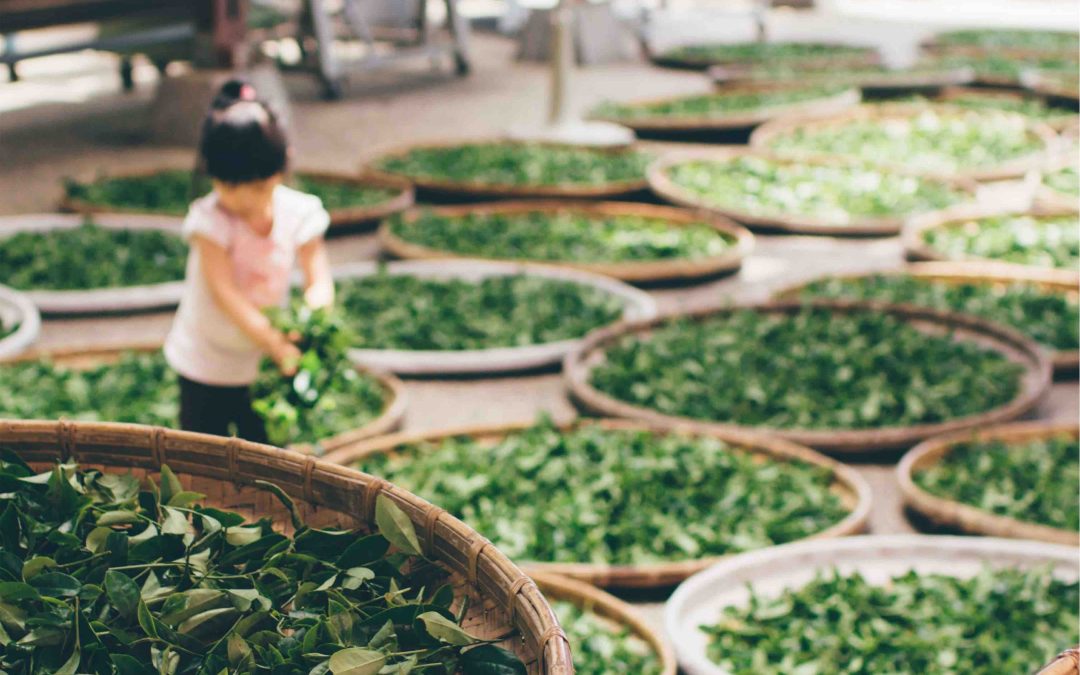Forced labor in tea farming: how far removed are we?
Think about the foods and beverages in your kitchen right now. Would it be possible for you to list their origins down to the grower of each ingredient? I know I couldn’t, not even for something as simple as the tea in my cupboard. Let’s try and trace it back.
Logistically, the tea came from the local supermarket either bagged or loose leaf. The leaves arrived at a factory to be manufactured and packaged. Then someone or a machine had to tear them off the plant and send them to the factory. Those plants came from seeds of course which were planted and tended to. So that’s simple enough, right? But what these steps don’t take into account is the human effort needed throughout the process.
How is Tea Made?
First Step:
The seeds need to be planted and taken care of. Mike Loeb of Leaf House Tea states in three to five years’ time farmers can start picking the leaves. Interestingly, if the plant is maintained leaves can grow for decades or sometimes longer. But the climate must be just right for them to grow. Even the same teas with different variants can need different climates. So this can be one reason for the use of forced labor.
Tea plants must be treated as “part of the extended family” to reach full potential, according to Loeb. Tea growing isn’t going to be desirable for those not dedicated to it. And like many other undesirable jobs, it is then done by those who are marginalized and in poverty. Forced labor is not allowing workers to leave or do anything other than sleep, eat, and work, often with little or no pay. Sadly many children are in forced labour.
Second Step
Next, these workers pick leaves by hand to determine their maturity. Different types of tea will require different maturity levels. Leaf house does say that machinery can be used to pick tea leaves, but rather than only taking certain levels it will take all of them from the plant. This results in a lower quality tea. Small scale tea is considered just picking a few pounds, but the large scale is several tonnes.
Now, we might think it would cost more to have handpicked tea, but forced labor dissolves that issue. With the little pay workers receive, managers then impose debts onto works that leave no income and no accumulation of money. This is called debt bondage and includes costs like housing, food, or any transportation used to get works to the area. This might sound reasonable, but on many accounts, workers receive nothing more than what keeps them alive and sustained yet they are still making no money.
Third Step
The third step is processing. It then takes another team of workers to process the leaves. Starting with withering them to become soft. Followed by heated with steam or fried in a large pan. Then either in one’s hands or using a tea rolling machine leaves are pressed just enough and not to a pulp.
Fourth Step
The last steps include oxidization and drying of leaves so they can be packages and shipped. This process after farming can also be done with forced labor, so realistically we can’t track exactly who is handling our goods and how they are being treated. But as consumers, we can make a better effort to pay attention and ask questions about who was involved in the supply chain.
Children working to Make our Tea
This year is the UN year to end child labour. We need to consider this every time we drink a cup of tea. Many children are in harsh conditions picking our tea.
Every day The Freedom Hub supports the progression of human rights by helping those who have gone through any modern slavery and/or human trafficking in Australia. They show the care and compassion one needs after a life-altering situation. At their Hub in Waterloo or online, you can find products from tea to candles to coffee that they have ethically selected and checked for risk of modern slavery in their supply chain.
The Freedom Hub values come full circle, as all the money made goes right back into helping survivors at The Freedom Hub Survivor School.
–
Other Articles you might like:
Three Reasons Locals Love Freedom Fighter Coffee
Join our Community
If you would like to volunteer, contact us here.
Or if you would like to get our monthly update, opt-in here.
If you would like to support a survivor, donate here. (tax-deductible)
Written by: Written by: Nicki Bettuzzi (a FH Volunteer)

